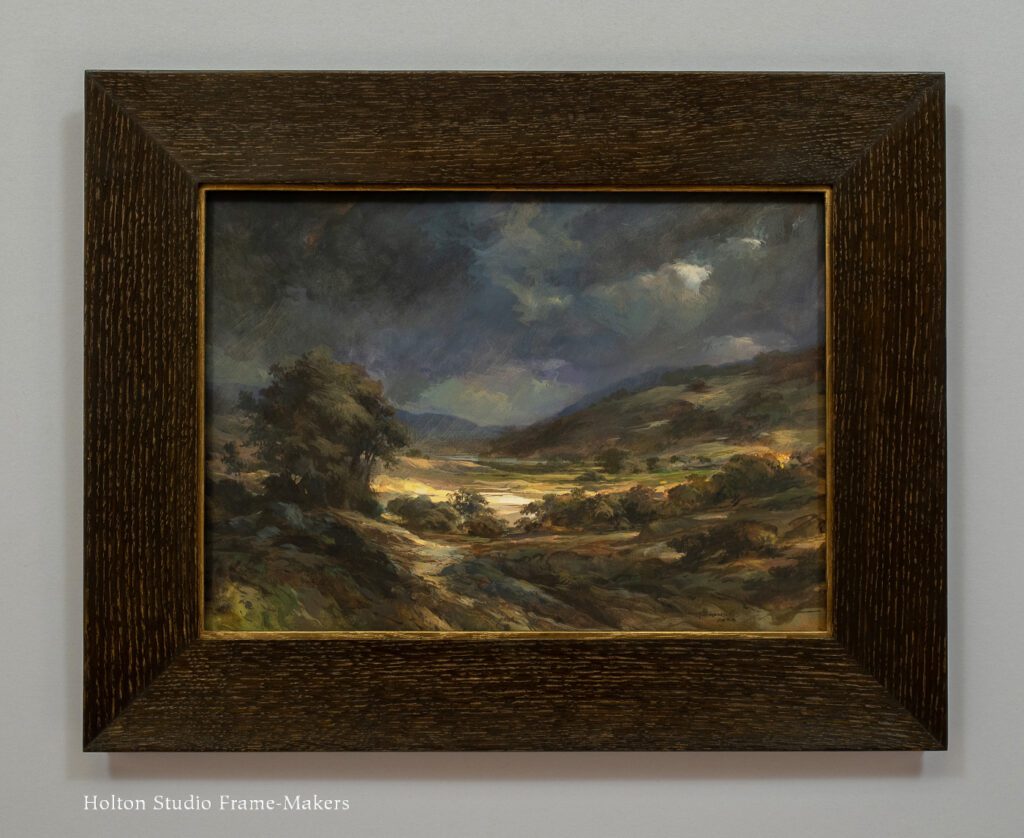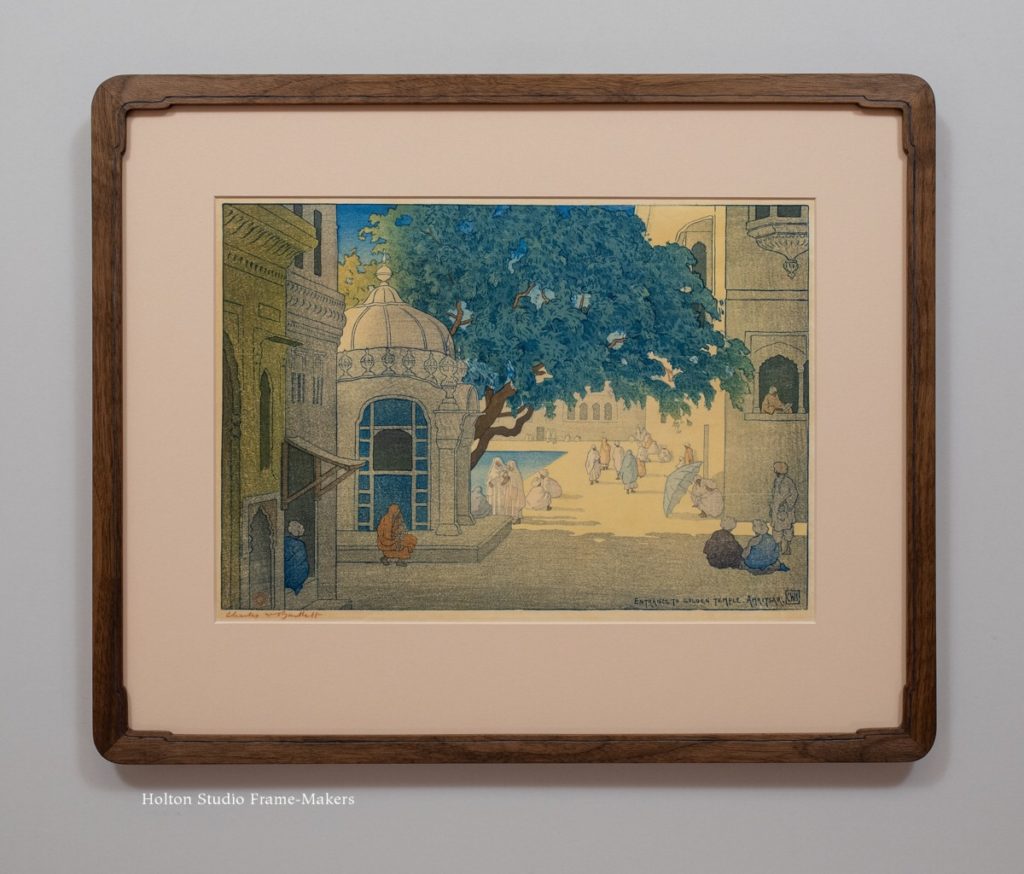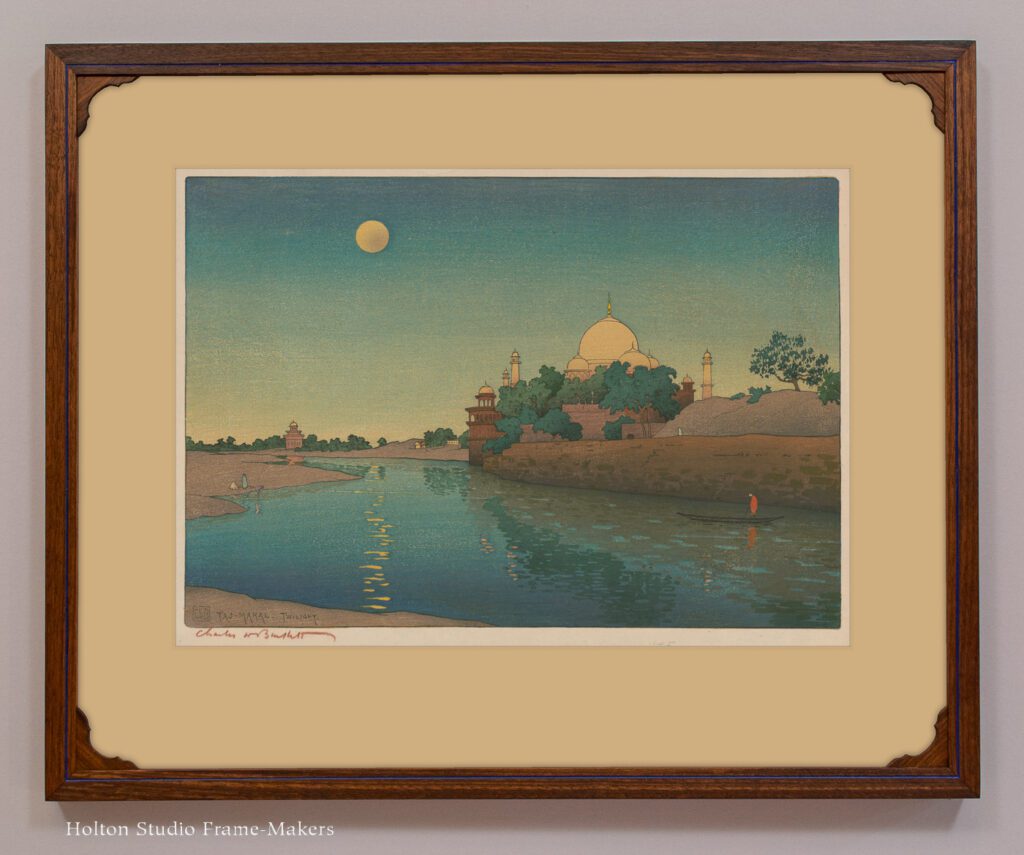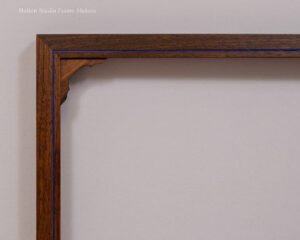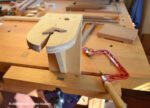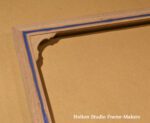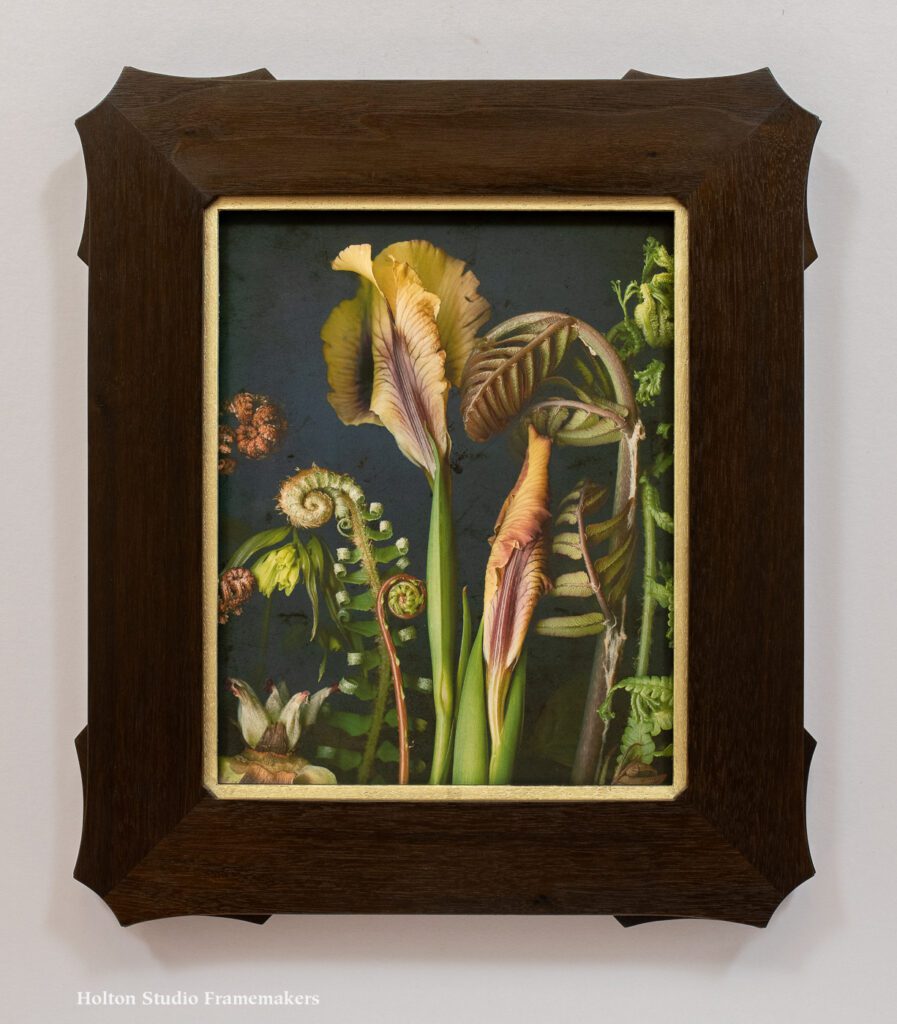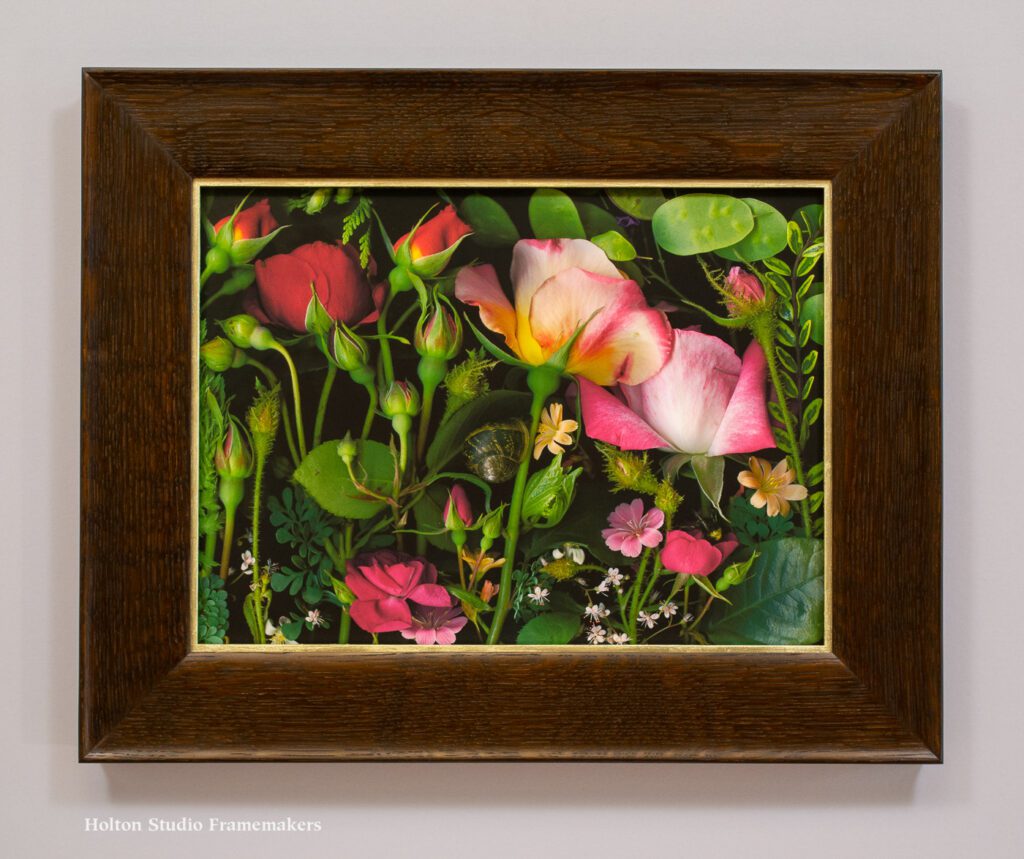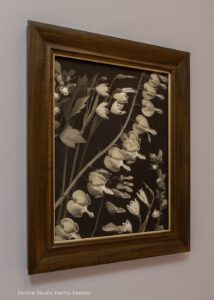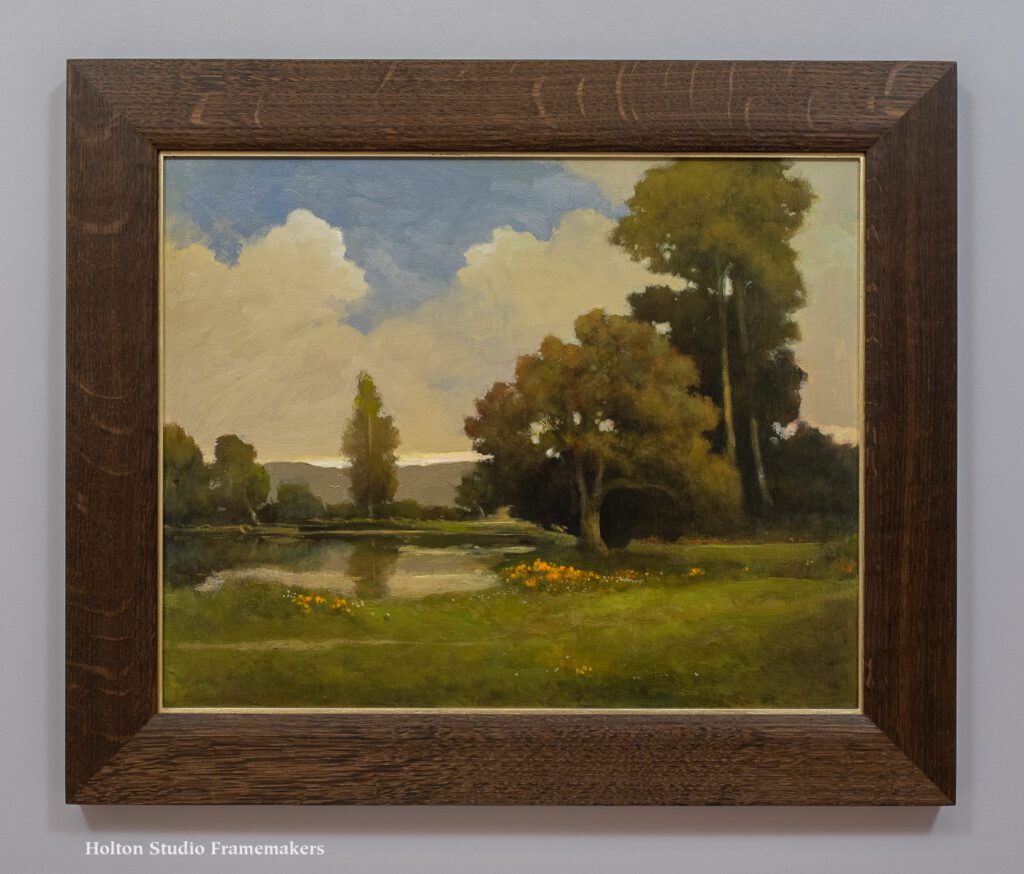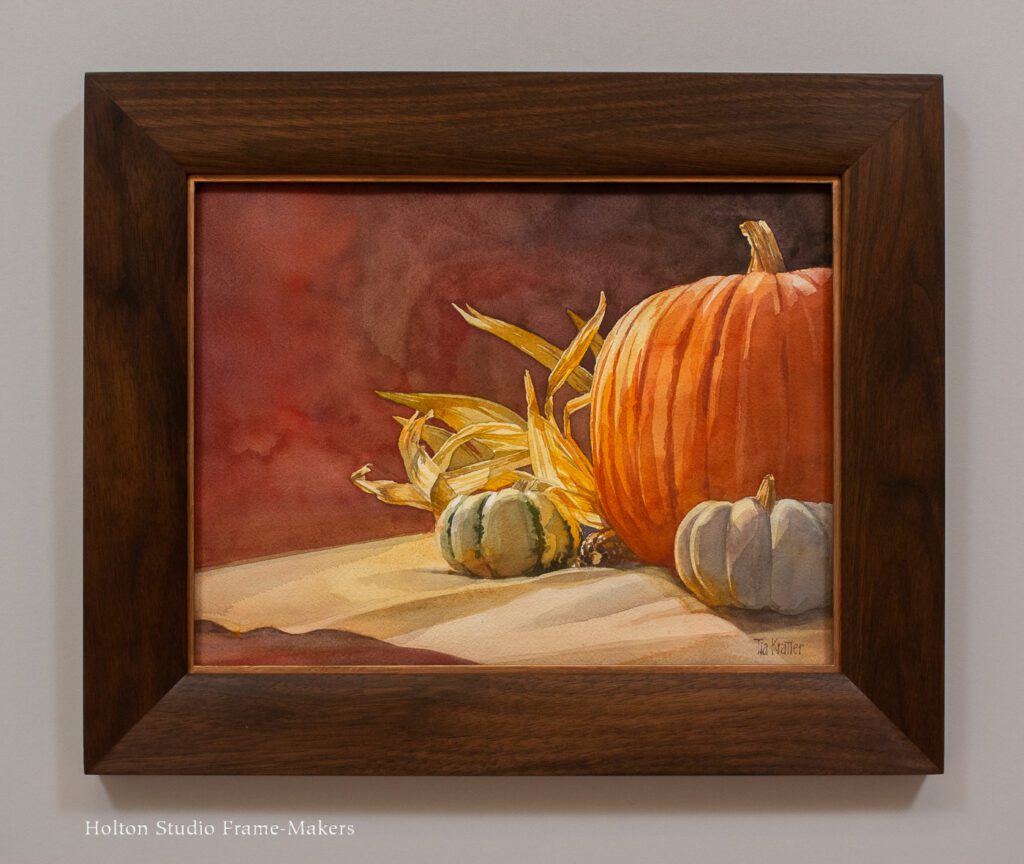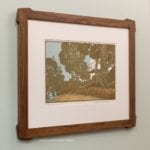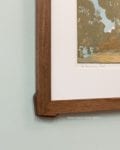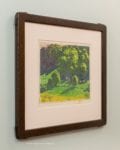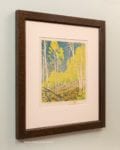Wednesday’s post showed a Gustave Baumann print, “The Dooryards,” which we framed close. Here are three more woodblocks by Baumann we framed, all matted. I never get tired of serving that artist’s blithe spirit.  (See other Baumann examples on the site, here, here, here, and here. One of my favorites we’ve framed, an unusual one of marigolds, is in the Portfolio, here.) Pomegranate Press has two beautiful books on Baumann, including his autobiography and Gustave Baumann: Views of Brown County. There’s also the very impressive Baumann catalogue raisonné by Gala Chamberlain of Annex Galleries, In a Modern Rendering: The Color Woodcuts of Gustave Baumann.
(See other Baumann examples on the site, here, here, here, and here. One of my favorites we’ve framed, an unusual one of marigolds, is in the Portfolio, here.) Pomegranate Press has two beautiful books on Baumann, including his autobiography and Gustave Baumann: Views of Brown County. There’s also the very impressive Baumann catalogue raisonné by Gala Chamberlain of Annex Galleries, In a Modern Rendering: The Color Woodcuts of Gustave Baumann.
For myself, I won’t try use words to remark on Baumann’s work, feeling before his work a bit like the artist himself did looking out on the Grand Canyon at night: “The Canyon under a full moon,” he said, “may become a baited trap for superlatives; it is better felt than talked about.” What he had to say about his art came down to one sentence: “Draw directly on the block whatever you want, cut away whatever you don’t want and print what’s left.” In any case, the most reliable and telling expression of how we feel about any picture is the physical, architectural place we give it—the frame.
The first two frames feature shaped proud splines.
“The Swimming Pool,” below, is from the same set of a dozen prints that “The Dooryards” came from—a set Baumann called “In the Hills o’ Brown,” made in Brown County, Indiana in 1910. We framed “The Swimming Pool” in a 1″ wide flat mitered walnut frame, with outset corners and shaped proud splines. (Details at bottom of post.)

“The Swimming Pool,” 1910. Woodblock, 10-1/4″ x 13-3/4″.
In 1918, Baumann moved from Indiana to New Mexico. The two below are in the artist’s better-known style, developed after the move. For “Woodland Meadows,” below, we used a flat mitered frame and carved and softened the edges. Shaped proud splines, also carved, articulate the corners and echo a bit the shape of the trees. (Details below.)

“Woodland Meadows,” ca. 1930. Woodblock, 9-5/8″ x 11-1/4″.
“Aspen Thicket,” below, is framed in a mortise-and-tenon No. 1100 CV—1″ in quartersawn white oak (Medieval Oak stain). The sight edge chamfer is carved. (Details at bottom of post.)
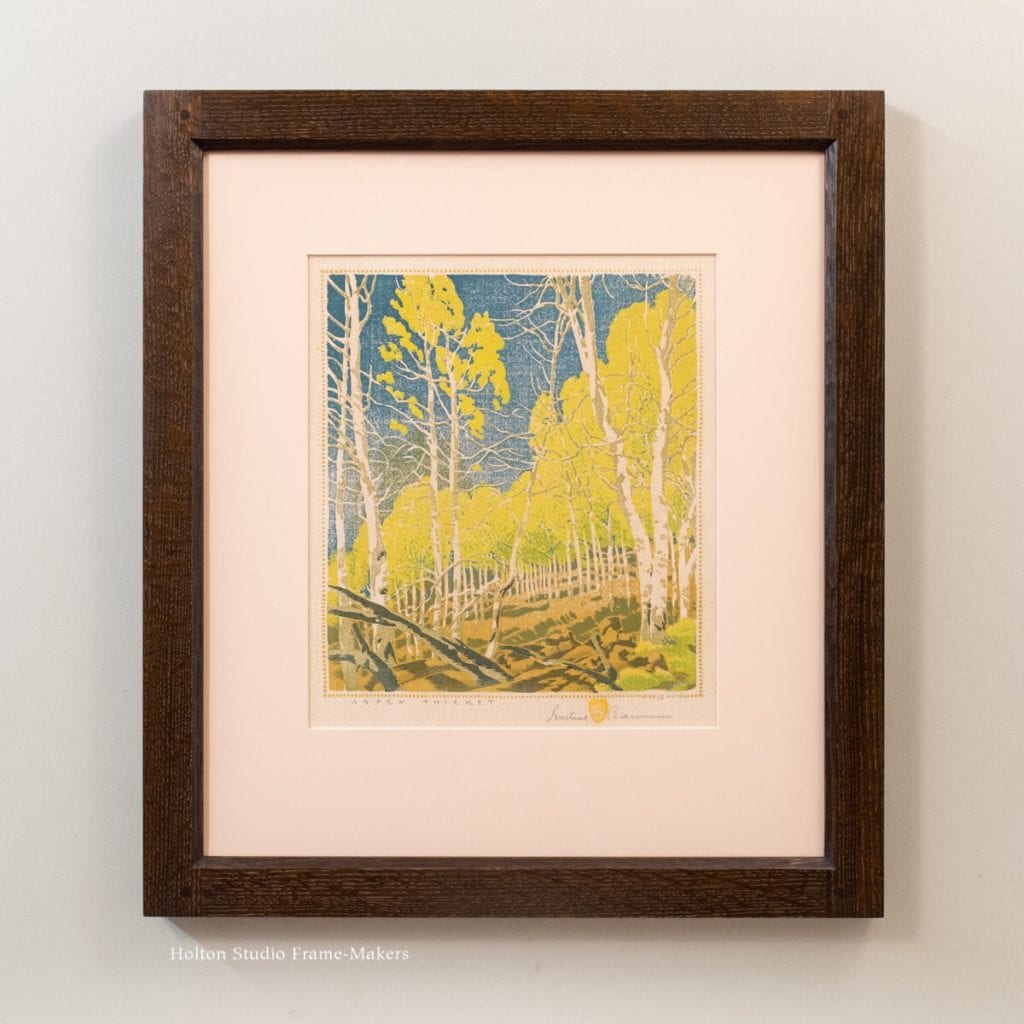
“Aspen Thicket,” 1943. Woodblock, 10-7/8″ x 9-5/8″.
More Views—
